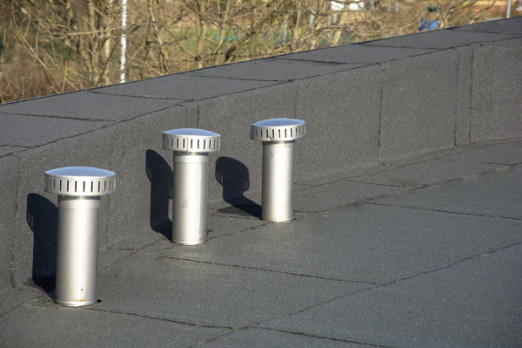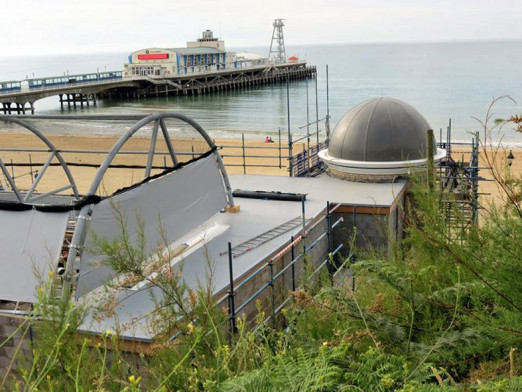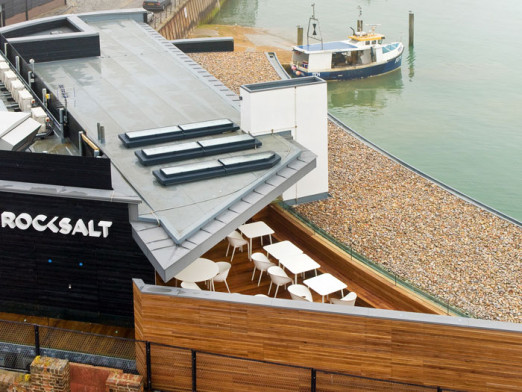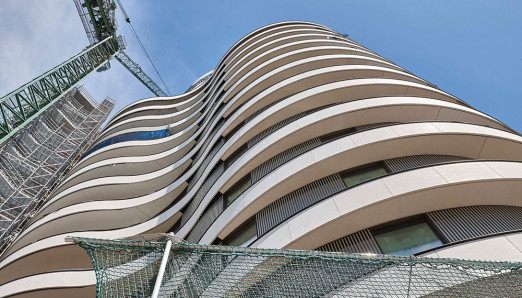SIG Design & Technology’s National Specification Manager for Bituminous Membranes Ian Dryden looks at some key hazards associated with having a leaking school roof and what can be done about them. If you are involved in school risk assessment, why not use this list to familiarise yourself with some of the hazards and make the case for resolving a leaking roof.
SIG Design & Technology has been supplying school roof refurbishments and operate a successful bid process in consultation with specialist educational surveyors for the replacement or refurbishment of flat and pitched roof areas. SIG Design & Technology provide our service to schools for free, including our comprehensive roof survey and specification. For more information visit our website www.fixmyschoolroof.com
Fire risk
The ingress of water caused by a leaking roof (or the buildup of moisture caused by interstitial condensation) can represent a significant fire risk. Water will track along beams and within ceiling voids where electrical wiring and lighting is often situated. If this water comes into contact with circuitry, it can cause shorts, sparks and electrical shocks. This represents a significant hazard which can put pupils, staff, and the building itself at risk of injury or death.
Slip and trip hazards
Slip and trip hazards are commonly covered as part of your premises risk assessment. If water is dripping from a leaking roof onto floors and corridors, this puts pupils and staff in danger of slipping on wet floors.
Leaking water can also cause trip hazards. Timber and other flooring can warp and lift when exposed to moisture, exposing pupils to the risk of tripping. If a leak is ongoing which is not uncommon in schools, you may have sought to temporarily mitigate the risk by placing buckets to catch the drips; but these themselves also represent a trip hazard. The worst example I’ve seen is a leak onto a staircase landing with heavy duty vinyl flooring which was lifting. This created a potentially fatal trip hazard.
Health risks of moisture
Dirty rainwater dripping through insulation can’t be good for the health, however both damp and mould represent a recognised hazard, particularly to children and those with allergies and asthma. Moulds produce allergens, irritants and in some cases toxic substances. Inhaling or touching mould spores may cause allergic reactions and asthma attacks.
Whilst PE changing rooms and showers will be most susceptible to mould, leaking roofs can also create this hazard elsewhere in your school. This is a problem recognised by the NHS, WHO and teacher’s unions.
Water damage to equipment
As well as causing electrical and fire hazards, water can damage electrical equipment, from kettles and printers to computers and laptops. Why bid for a new IT suite when your roof is leaking? Make sure the roof is sound first, or the investment will be wasted.
In addition, water leaks can damage floor finishes and other equipment such as carpets, desks, chairs and furniture, along with stored materials and equipment. It isn’t unusual to find a whole store room full of ruined stationery when a school roof has been leaking.
Damage to building fabric
Water leaking through your roof will be damaging the building fabric itself. A well-designed roof will get water off quickly into downpipes and drains. If the membrane has failed, that same water will build up on the roof and sink through the roofing layers damaging everything in its wake.
You may first notice when the ceiling tiles become stained, but later they may turn to mush with prolonged soaking and drop onto the people, equipment and floors below. However behind this obvious sign is something much more hazardous.
Flat roofs are often boarded with plywood, which can delaminate and become fragile with prolonged water damage. This will create risk of collapse, which may be exacerbated if there is a trespass on the roof. In this way, prolonged water damage can constitute a major risk to your school.
School risk assessment: how to mitigate against leaking roof hazards
When you’re involved in school risk assessments the principle is to eliminate as many hazards as possible, and only seek to mitigate those that cannot be eliminated. As we can see from the examples above, there are several associated hazards. If the problem is not dealt with, even the simplest of effects can create knock on hazards and associated costs to the school. This is why ensuring the schools roof is intact and performing properly and repairing any leaks is essential.
If you suspect a leak in your roof do NOT climb up onto the roof, call an expert in. Getting a comprehensive school roof survey will help you understand the true situation, put your mind at rest and help you plan for funding applications. SIG Design and Technology are independent specialists in flat roofing, so we’re ideally suited to carry out a survey for you, and what is more our survey is FREE.
Postscript: a note about asbestos
According to the Control of Asbestos Regulations 2012, the employer is responsible for managing asbestos, which means an academy school’s governors must manage any asbestos risks in an academy school. Academies should implement an Asbestos Management Plan which will include roles and responsibilities, information about the property and Asbestos Containing Materials (ACMs) and an emergency plan.








